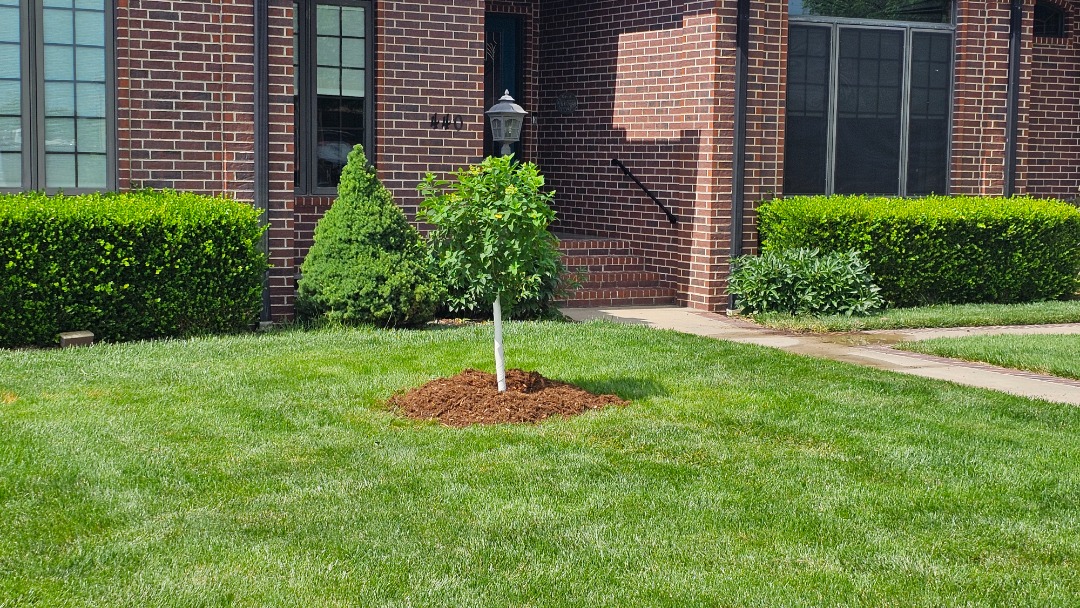Best Times for Tree Planting- Is it Ok to Plant Trees in the Summer or Fall?
Tree Planting for the Summer – Do’s and Dont’s
Pros for Summer Tree Planting
Several surprising benefits come with summer tree planting, but it must be done with proper care and planning. One of the key advantages is faster root establishment. By planting trees in the summer, no freezing temperatures will hinder root growth. You can also have a nice-looking, aesthetically pleasing yard for the summer. Besides looks, summer-planted trees can help reduce soil erosion and manage stormwater runoff with their roots. Summer tree planting is a great alternative if you have summers that aren’t too hot and you have irrigation available so your tree doesn’t lack water.
Cons for Summer Tree Planting
A few cons that come with summer tree planting, and make it more challenging than fall and spring planting, is that summer trees could potentially undergo heat stress. This results in wilting, sunburn, and stunted growth. Trees need to expend extra energy if they are exposed to extreme heat. Summer planted trees also need frequent water due to the increased evaporation during the hot summer days. This can be an issue if your tree doesn’t have access to irrigation. Lastly, nurseries might have fewer tree species to choose from compared to the spring and fall.

Tree Planting for the Fall – Do’s and Dont’s
Pros for Fall Tree Planting
Fall is one of the best times to plant trees since it helps establish resilient and healthy trees. The soil remains warm from summer, but the characteristic fall-cool air is present. This combination will help promote root growth without the strain of supporting foliage and flowers. It can also help trees focus on root establishment, reducing the stress trees can experience. Lastly, the fall weather brings increased irrigation, fewer pests, and more potential discounts from nurseries who want to clear out their inventory for the coming winter.
Cons for Fall Tree Planting
Some cons come with fall planting. For example, there is the risk of a potential early frost. If the frost arrives, trees planted too late in the season can get damaged or killed. Newly planted trees are also vulnerable to freeze-thaw cycles. This can push their roots out of the ground and expose them to freezing conditions. Lastly, some tree species, like fruit trees or evergreens, are not ideal for planting during the fall since they need more time to establish their roots during the winter.

Tree Planting for the Winter – Do’s and Dont’s
Pros for Winter Tree Planting
If done properly, winter tree planting can be advantageous for several reasons. During the winter, trees are dormant, but the roots will continue to grow below the surface. This will help trees focus on creating a strong root system for the spring. Just ensure you implement mulching to protect the tree from the cold and provide it with vital nutrients. Another benefit of planting trees during the winter is that it helps bring consistent rainfall or snow, which reduces the need for watering. Trees that are also planted in winter are less susceptible to diseases and pests since, during the winter, their activity is severely reduced. Lastly, nurseries often have a wider selection of tree species in the winter due to lower demand. There is an opportunity to receive a discount or promotion, making a tree purchase more cost-effective.
Cons for Winter Tree Planting
There are some cons to winter tree planting that are worth considering. One potential disadvantage is that the ground can freeze during colder climates, making it hard to dig into and properly plant your tree. This will make it harder for the roots to penetrate the soil. Trees can also halt or slow their root development if it gets too cold. There are also moisture challenges where trees risk winter drought, road salt runoff, and a less functional irrigation system due to the cold. Lastly, winter storms and ice accumulation can damage newly planted trees by bending or breaking their branches. Winter planting is ideal for places with mild winter weather and less exposure to snow and/or freeze damage.

Conclusion
In conclusion, when it comes to planting trees, the ideal times are the spring and fall. Each season has its fair share of drawbacks and pros, but if you properly care for your tree, it can thrive in any season. By implementing good practices like pruning, mulching, and providing protection, your tree will grow big and strong quickly! If you’re interested in professional tree planting services, Divine Lawns is the best landscaping company in Andover, Benton, and Augusta, KS! We’ll be able to provide services that will save you time and energy and help your yard look simply divine! You can Contact Us today for more information on how we can help you meet your goals for your yard.

"*" indicates required fields

Stephanie D.

Nolan A.

Tom F.

Anthony H.
 (316) 435-3509
(316) 435-3509 office@divine-lawns.com
office@divine-lawns.com